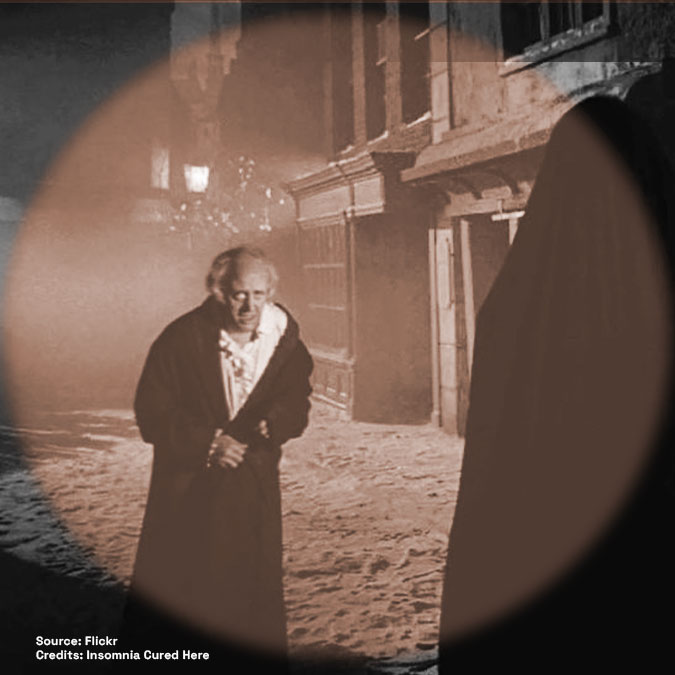Chekhov’s Gun
Toolbox articles are shorter-form pieces that explore wider literary tropes, like point-of-view narrative and tense. Sign up to our newsletter to receive these articles direct to your inbox, before they’re published on the site.
As we continue to read and analyse great fiction, it should become increasingly clear how intricate the writing process is. When done well, it all hangs together perfectly. It’s like a spider’s web, where every verb, adjective and noun are individual gossamers that make up the larger piece. Alone, they may not count for much, but together they make up something far greater.
We saw an example of this in our last newsletter, where we considered the role of character transformation in fiction.
A character’s journey is not made up of a single defining moment; rather, there are often dozens of scenes and subtle actions – some of which are seemingly insignificant – that nudge the character along through their progressive arc.
In this article, we’re going to dive into this idea deeper, by considering an even more fundamental principle of literary economy. One that is sometimes referred to as ‘Chekhov’s Gun’.
‘One must not put a loaded rifle on the stage if no one is thinking of firing it.’
– Anton Chekhov
What is Chekhov's gun?
Chekhov’s Gun simply states that everything in fiction needs to exist for a reason, whether it’s a prop, character or scene. There is, according to Chekhov, no room in writing for superfluity. If it’s written on the page, it must be there to advance the story in one way or another.
This can pose significant challenges to a writer, forcing them to scrutinise every word they write and decision they take.
Let’s consider an example. Imagine I’m writing a rags-to-riches story about a man who ultimately finds fame and fortune through his newsletter (sounds pretty great, eh?), and the story’s opening paragraph is him struggling to overcome writer’s block.
It was a summer’s day. The man was staring at a blank computer screen, running his hand through his blonde hair. On his desk, there was a half-empty cup of coffee, a small pile of books and an empty notebook.
What information does this paragraph provide a reader with? Well, we know what time of year it is. We know the colour of the man’s hair and what items he keeps on his desk. We can also guess that he’s working on some sort of project on his computer.
Fine. But which of these is actually important to the larger story? Per my rags-to-riches writer’s block brief, the only part that is necessary is the staring at a blank screen. The rest is currently superfluous. And unless I can later attach some sort of significance to the time of year, the colour of my character’s hair and the items on the desk, then they should be cut, leaving us with the following:
The man was staring at a blank computer screen.
According to the Chekhov’s Gun principle, this is a decent edit. We’ve cut the superfluity and all that’s left is that which advances the plot. But I think we can agree that this is somewhat lacking when it comes to a good story opening. As readers, we want flair in our fiction. We want exposition and intrigue to help get us into a story.
So the question remains: how can a writer both advance the plot and provide the necessary depth that makes up good fiction? Let’s take a look at a master in action to see how.
Hemingway and Chekhov's Gun
To further explore the Chekhov’s Gun principle, we’ll return to an old story covered by fetish literature: ‘Hills like white elephants’ by Ernest Hemingway.
We won’t go into detail about the story here, except to say that it’s a masterclass in economic writing. In under 1,500 words, Hemingway creates one of the most iconic short stories of all time. (You can read the full analysis by clicking here.)
Here are the opening three sentences:
The hills across the valley of the Ebro were long and white. On this side there was no shade and no trees and the station was between two lines of rails in the sun. Close against the side of the station there was the warm shadow of the building and a curtain, made of strings of bamboo beads, hung across the open door into the bar, to keep out flies.
I hope you’ll agree that this is a beautifully written opening, but does it stand the test of Chekhov’s Gun? Just as we did with the story about the man writing his newsletter, let’s examine Hemingway’s opening lines.
The hills across the valley of the Ebro were long and white.
This first sentence sets us by the Ebro river in Spain. We learn that the hills across the valley are ‘long and white’. Is this superfluous? No, because this later becomes the reason why one of the characters becomes fixated on the view, saying that the hills look like white elephants.
On this side there was no shade and no trees and the station was between two lines of rails in the sun.
This sentence sets the action away from the aforementioned hills across the valley and in a train station. The fact that they are apart from the hills later plays into Hemingway’s neat metaphor for the characters’ relationship. And that they’re waiting at a train station tells us that they’re on the move and won’t be hanging around for hours on end.
Close against the side of the station there was the warm shadow of the building and a curtain, made of strings of bamboo beads, hung across the open door into the bar, to keep out flies.
This is one of my favourites. They’re in a bar (alcohol and drinking are a big part of the story) and they’re behind a curtain ‘made of strings of bamboo beads’. This separates the characters from the rest of the world (and the flies!), creating a small arena for the conflict to unfold.
I think we can comfortably say that Hemingway has passed the Chekhov’s Gun test. Unlike the story about the man and his newsletter, these opening three lines are vivid and cinematic, as well as vital to the advancement of the plot. Each description either creates a mood from which the ensuing drama feeds from, or plants the beginnings of subtexts that are later referred back to in the story.
Fiction and reality
As a quick aside before we wrap up, it’s interesting to note the relationship between fiction and reality. Even the most surreal stories have to be grounded in reality to some degree, whether it’s the setting or the characters or the plot – or all three. It’s how we relate and engage with fiction.
However, the Chekhov’s Gun principle isn’t aligned with our everyday experiences much at all.
Consider how many different people and scenarios you come across in your day-to-day life, almost none of which end up playing a lasting or recurring role in the greater story of your life. Whether it’s at the supermarket, on the way back from work or at a restaurant on Saturday night – there are many superfluities in our real-world lives. It’s safe to say that if you were to create an ultra-realistic, beat-by-beat novel based on your life, it would not pass the Chekhov’s Gun test.
This is because fiction is not supposed to be an ultra-realistic reflection of the real world. Rather, it is a unique perspective. There is no universal story that captures every person’s everyday experiences. Chekhov’s Gun helps writers to refine their writing, to make it specific to the unique story they want to tell.
By ensuring that every word in a story matters – that every character, prop and scene is engineered perfectly to a greater design – the best writers are able to capture a part of the real world that they want to share with their readers, rendering it as clearly as possible.
Try it at home
Try the Chekhov’s Gun test for yourself. Pick up one of your favourite fiction books and read the first few lines. Make a note of the descriptions. Are they necessary? What do they add to the larger story? Are they referenced again later in the book?
Writers! Try this with your own work. Ask yourself if every description is vital to advancing the story that you want to tell.
Go a step further
Click here to read the full analysis of ‘Hills like white elephants’ by Ernest Hemingway. In the article, we cover the opening paragraph in more detail, plus how each of the seeds sown in those first few lines plays out in the rest of the story.



